International Pet Day, observed each year on April 11th, provides the purrfect opportunity to reciprocate all the labored love and affection our pets so freely give us. There’s no doubt that our furry, feathered, and scaley friends greatly improve our quality of life. But did you know there are benefits to this human-animal bond beyond their incredible cuteness? Read about some of the paw-some science-approved benefits that can come with pet ownership.
Continue reading “The Power of Pet Ownership”General
PARP and DDR Pathways: Targeting the DNA Damage Response for Cancer Treatment
Our cells, and the DNA they contain, are under constant attack from external factors such as ionizing radiation, ultraviolet light and environmental toxins. Internal cellular processes can also generate metabolites, such as reactive oxygen species, that damage DNA. In most cases, DNA damage results in permanent changes to DNA molecules, including DNA mismatches, single-strand breaks (SSBs), double-strand breaks (DSBs), crosslinking, or chemical alteration of bases or sugars. If left unchecked, DNA damage can cause genome instability, mutations and aberrant transcription, and oncogenic transformation.

Fortunately, our cells have also evolved multiple pathways to repair damaged DNA, collectively known as the DNA damage response (DDR). The type of repair mechanism depends on the nature of the damage, and whether the damage occurs in mitochondrial or nuclear DNA. These mechanisms have been reviewed extensively (1,2). Recently, considerable attention has focused on pathways for repairing SSBs and DSBs, mediated by the ADP-ribosylating enzyme known as poly (ADP-ribose) polymerase 1, or PARP-1.
Continue reading “PARP and DDR Pathways: Targeting the DNA Damage Response for Cancer Treatment”Confronting an Emerging Pathogen: Candida auris
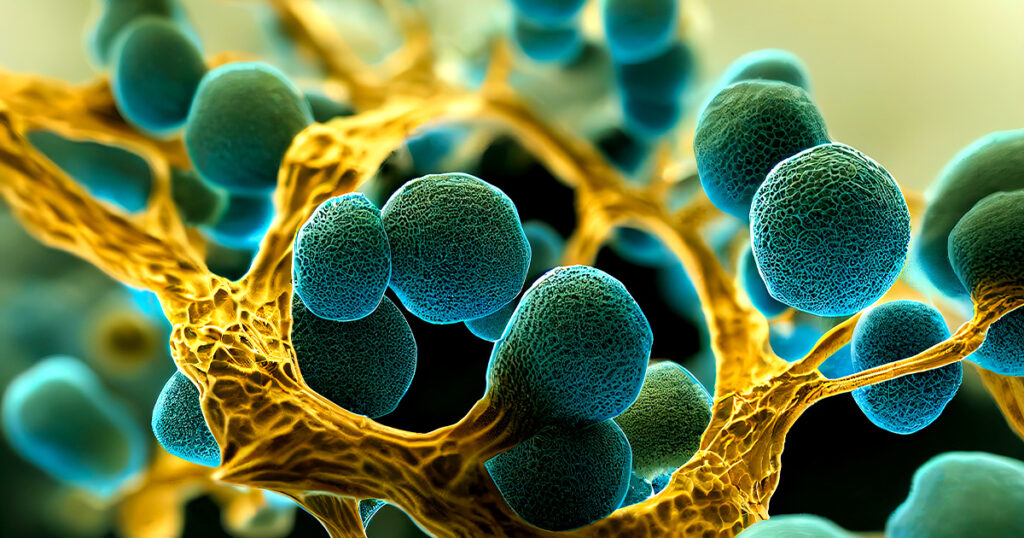
HBO’s The Last of Us has successfully brought fungal pathogens to the forefront of the pandemic discourse, raising questions as to whether a fungus could really pose a significant threat to humans. While scientists agree that the fungus featured in the show, cordyceps, won’t be making the required inter-species jump any time soon, there is a fungal pathogen that has been taking root in hospitals across the U.S. which gives some cause for concern: Candida auris.
Continue reading “Confronting an Emerging Pathogen: Candida auris”The Purr-suit of Happiness: The Science Behind Feline Purring
As any cat person would tell you, one of the greatest joys in life is to be curled up with a feline friend as they purr. Though purring is one of the most widely recognizable and comforting sounds in the animal kingdom—a sound that has come to be virtually synonymous with coziness and contentment—the how and why behind it is still shrouded with some mystery.
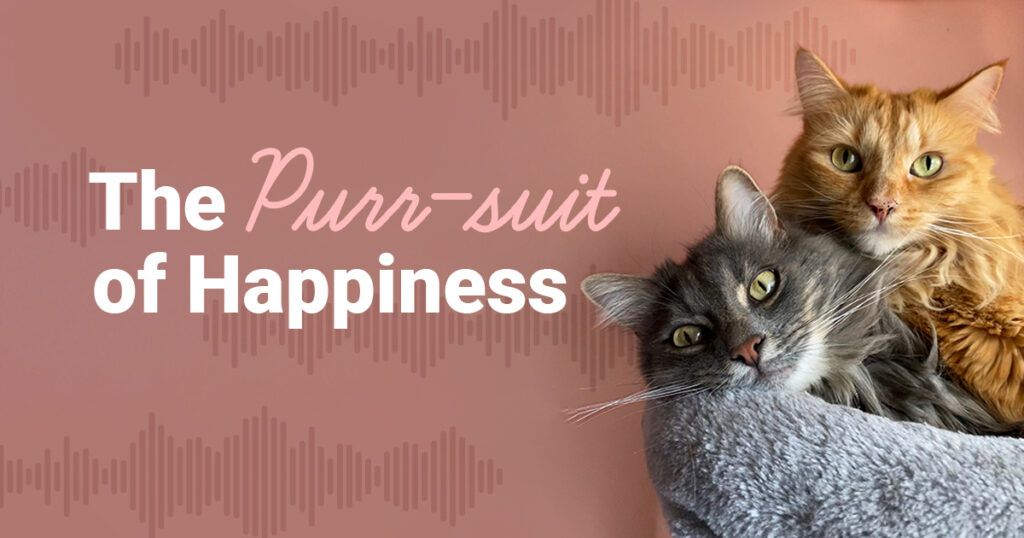
Vocal Purr-duction
The scientific community defines purring as a “low-pitched regular sound produced during alternating (pulmonic) egressive and ingressive airstream”. This is a fancy way of saying that sound is continuously produced during both exhales and inhales with no interruptions in between, while keeping their mouths entirely closed. Like fuzzy little ventriloquists.
But how does purring actually work? In the 1960s, it was initially hypothesized that purring was the resulting sound of blood percolating through the inferior vena cava, the blood vessel that returns blood from the body to the heart. However, further research later disproved that theory, indicating that the purring mechanism involves communication between a neural oscillator deep in the feline brain and the larynx, or voice box. As a cat’s laryngeal muscles move, they constrict and dilate the glottis, the part of the larynx surrounding the vocal chords. During inhalation and exhalation, the air passing through the glottis vibrates, resulting in a purr.
Fun Fact: Purring isn’t limited to just domestic house cats! Several wild feline species like bobcats and mountain lions, plus their close relatives mongooses, genets and civets can all purr. But there are a number of other animals that can produce a purr that might surprise you, including rabbits, raccoons, bats, guinea pigs, gorillas and elephants!
Good Vibrations?
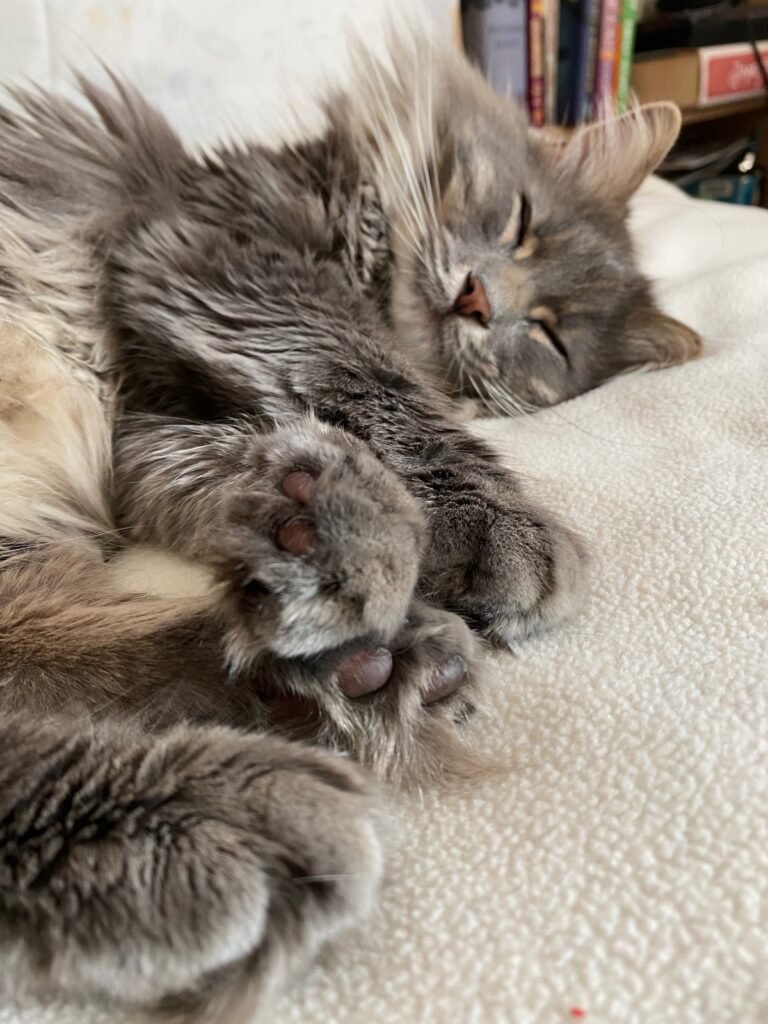
Though there is general consensus in the scientific community on the purring process, the question of exactly why cats purr is still up for debate, as studies regarding cat behavior and communication considerably lags behind the efforts for studying dogs. This may be partially due to the fact that dogs are typically more willing study participants (in that they are likely more easily bribed).
Though we most commonly consider a purring cat to be a contented cat, that is not always the case. It turns out that there are actually a number of other emotions and situations that will elicit purring as a response.
Cats first begin to purr when they are only a few days old. As newborn kittens are blind, deaf and overall completely helpless for the first few weeks of their lives, purring serves as a quiet, subtle form of communication and bonding mechanism between mother and offspring. Purring can help kittens communicate their location, and provides a means for mom to affirm her babies’ comfort and safety, as well as signal feeding times.
This behavior sometimes carries over into adulthood, with some cats continuing to purr while they eat or as a means to convince their human that it’s dinner time. A University of Sussex study found that cats even have a solicitous purr that they can employ for exactly this purpose. By embedding a cry similar in frequency to that of a human infant’s cry within a purr, cats can manipulate their owners into taking action and feeding them by triggering and exploiting their innate human nurturing instincts. Even the study participants with no cat experience could hear the difference in urgency between an ordinary and an “I’m hungry” purr.
Purring has also been hypothesized to be a sort of self-soothing mechanism, as cats have been observed to purr in response to nervousness, fear or stressful events, like a trip to the vet, being chased by a dog, or exploring a new environment. Cats have also been observed to purr when they are in pain and dying, leading researchers to postulate about purring’s potential healing properties—for cats and perhaps for humans as well.
Feline Fine
In the early 2000s, researchers dug further into this notion, proposing that purring may have palliative properties that may assist in accelerating the healing process for a cat’s wounds or broken bones.
Given that healers have employed the power of sound and vibrations in their work for centuries, the basis for this notion is not far-fetched. Various studies regarding sound frequencies have demonstrated promising vibratory therapy results in some animals, such as rabbits. Even NASA has explored this therapeutic avenue as a potential means to combat bone density loss and muscle atrophy in astronauts headed to space for long stints.
A 2001 study that recorded and measured the purrs of 44 felids including ocelots, servals, cheetahs, pumas and domestic cats, found that every individual in this study produced strong frequencies between 25 and 150 Hertz (Hz). They discovered that all the species except cheetahs produced frequencies at exactly 25 Hz and 50 Hz, which research suggests are the best frequencies to promote fracture healing and bone growth. Additionally, those same four felids have a strong harmonic either at or within 2 Hz of 100 Hz, a frequency that has been therapeutically used to treat wounds, dyspnea, edema and pain. These findings support the hypothesis that purring may be an advantageous, low energy mechanism that can stimulate feline muscles and bones while sedentary.
Purring releases endorphins in cats and can do the same in people. Endorphins can lower stress hormones, which is beneficial for healing, lowering blood pressure and overall stress, and helping people cope with illness.
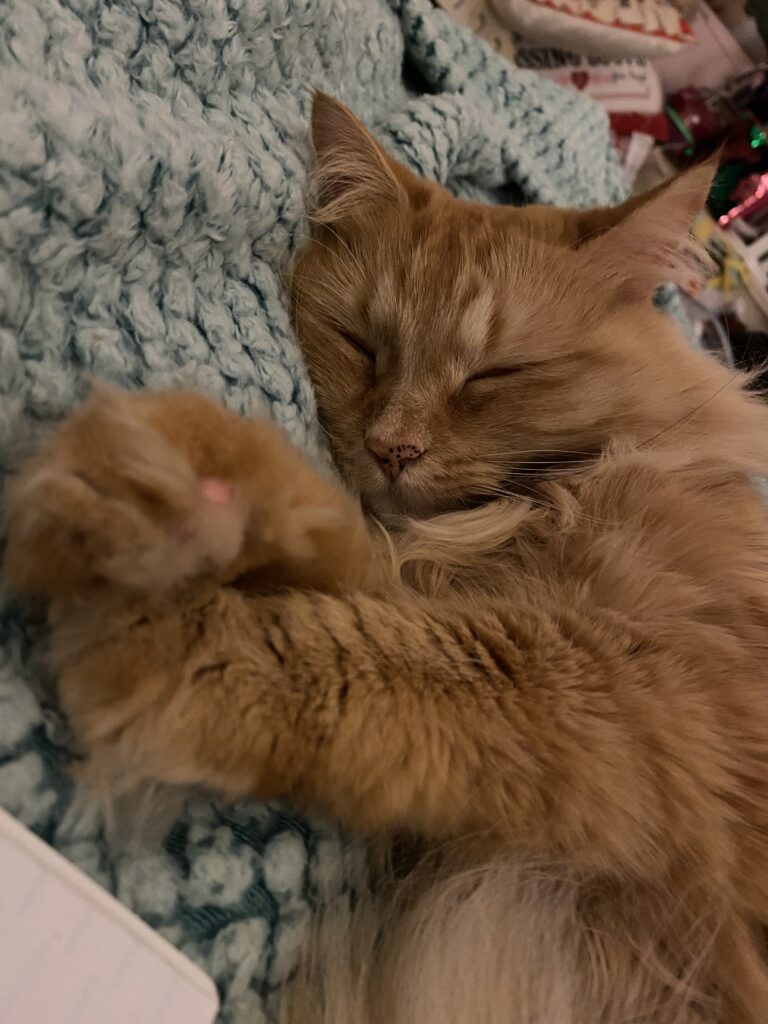
Further studies have shown cat ownership in general has demonstrated some physical health benefits. In 2009, a 20 year study of over 4,000 people found that cat owners appeared much less likely to die of a heart attack or stroke, as opposed to people who have never known the love of a cat, with non-cat owners being 40% more likely to die of a heart attack and 30% more likely to die of another cardiovascular disease including strokes than cat owners. Another study by Australia’s Baker Medical Research Institute found that pet owners tend to have lower blood pressure than people who don’t have pets.
Though no research efforts have further explored the direct effects of using purring felines themselves as a mechanism for healing, the overall health effects cat ownership has on people is undeniable. And though the exact purpose and potential physical benefits still elude researchers, purring undoubtedly offers both a soothing psychological balm and gentle medium of communication between a cat and their people.
Sources:
- King, I. (2022) The Cat’s Purr: A Biomechanical Healing Mechanism? Accessed December 2022.
- Wu, K. (2022) Purring is a Love Language No Human Can Speak. The Atlantic. Accessed December 2022.
- Harris, R. Do People Who Own Cats Really Live Longer? Accessed December 2022.
- Qureshi, A., Memon, M., Vazquez, G. and Suri, M. (2009). Cat ownership and the Risk of Fatal Cardiovascular Diseases. Results from the Second National Health and Nutrition Examination Study Mortality Follow-up Study. Retrieved from www.ncbi.nlm.nih.gov.
- von Muggenthaler, E. (2001). The felid purr: A healing mechanism? The Journal of the Acoustical Society of America. 110(5):2666.
- Why and how do cats purr? Library of Congress. Accessed December 2022.
- Dowling, S. (2018) The complicated truth about a cat’s purr. BBC.com. Accessed December 2022.
Exploring Investigative Genetic Genealogy
In the past few years, and as seen as a popular topic at ISHI 33, investigative genetic genealogy (IGG) has rapidly grown and emerged as a new field of science to identify human remains or cold case crime scene samples. The technique traces potential genetic familial relationships through DNA databases. Although genetic genealogy and public DNA databases have been around for quite some time, what’s new is their use by law enforcement.
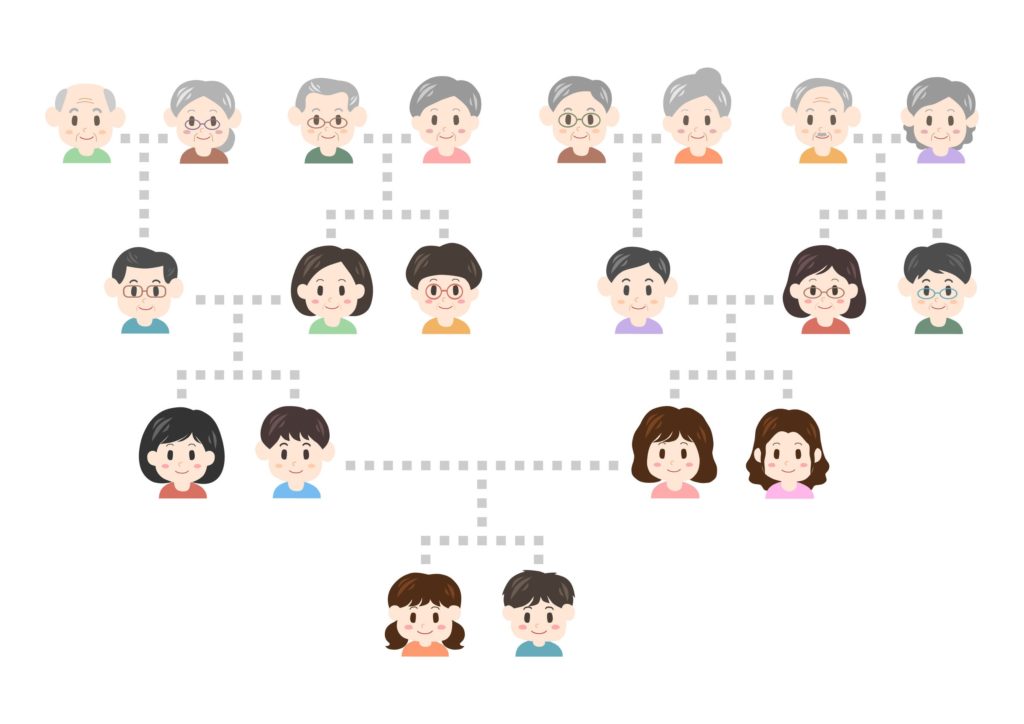
It’s Time to Automate Your Plasmid Purification
In the fifty years since the first reported transformation of recombinant plasmids into bacteria (1), plasmid cloning has become one of the pillars of synthetic biology research and manufacturing biopharmaceuticals.
But purifying plasmids is no small feat. It can often take hours of hands-on time to go from culture to eluate with low-throughput and time-sensitive manual methods. Automating plasmid purification is the way to go, whether you’re isolating a single plasmid from a large volume culture or creating a library of thousands of different constructs.
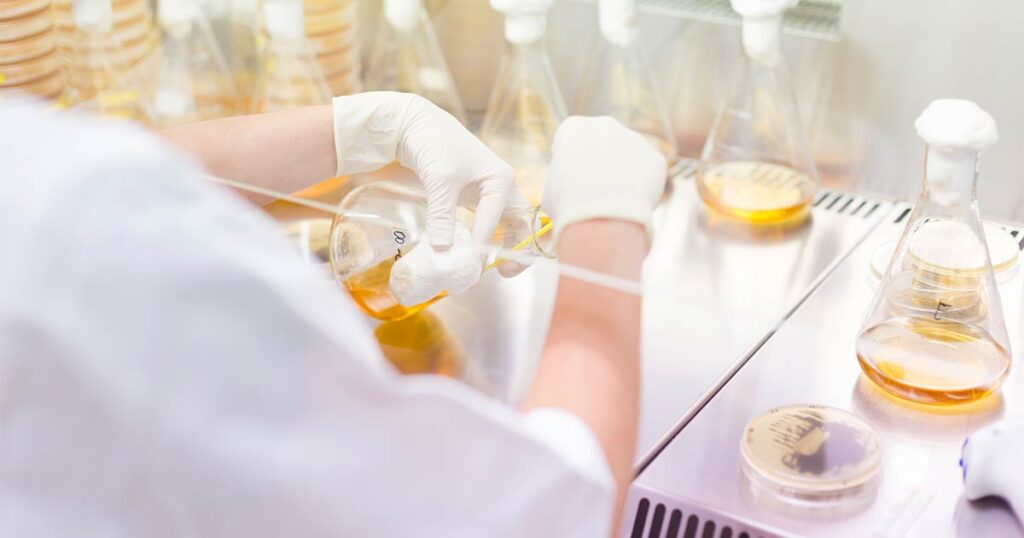
How We Connected in 2022

As the calendars turn to a new year, we love to take a moment to look back at the previous year. A lot happened at Promega in 2022! We launched Spectrum CE System, the first capillary electrophoresis instrument compatible with 8-color STR analysis chemistry. We announced that over 20% of our global electricity usage is now generated by renewable sources. We unveiled new employee benefits that aim to support employees dealing with specific life challenges.
Perhaps most importantly, in 2022 we prioritized meaningful connections and deepening our relationships with one another. From honoring employee contributions to marking significant milestones, here are just a few ways Promega teams around the world celebrated and connected in the past year.
Continue reading “How We Connected in 2022”Rocking Out with the Promega Band: Major Groove!

Have you ever heard Guns ‘n’ Roses and Lizzo in the same concert?
When the Promega employee band Major Groove takes the stage, you never know what they might play!
The Promega band started with a handful of employees in 2006 and has grown to include more than 50 active musicians. Today, they play at company meetings, picnics, art shows and much more.
“During my interview process, I was sent a list of links to learn more about Promega. I was like, “Hold the phone! This company has a band!” says Kathryn Sauter, a Business Analyst on the Global Logistics team. “I never thought I’d have an opportunity to participate in a musical extracurricular activity at a place where I work. Promega immediately shot to the top of my list.”
Continue reading “Rocking Out with the Promega Band: Major Groove!”Our Top Three Most-Viewed Blog Posts of 2022
In 2022, our bloggers wrote on topics ranging from monkeypox outbreaks to cultured meat in biotech labs to preventing the next pandemic. Our top three most-viewed blog posts this year have the commonality of Promega products helping to advance important research in different fields and push science a step forward in the world. Take a look at Promega’s top three most-viewed blog posts of 2022.
Continue reading “Our Top Three Most-Viewed Blog Posts of 2022”Recapping the 2022 iGEM Grand Jamboree
On October 26, hundreds of young scientists made their way through Paris to convene at the Paris Expo Porte de Versailles for the world’s largest synthetic biology competition. The iGEM Grand Jamboree showcases student projects from around the world that tackle real-world challenges such as nutrition, diagnostics and climate change.
Each year, ten Promega iGEM Grant winners receive $2,500 in free Promega products to support their research. Many Promega branch offices also provide support to teams within their region. In total, 36 iGEM teams were supported by Promega during the 2022 competition.
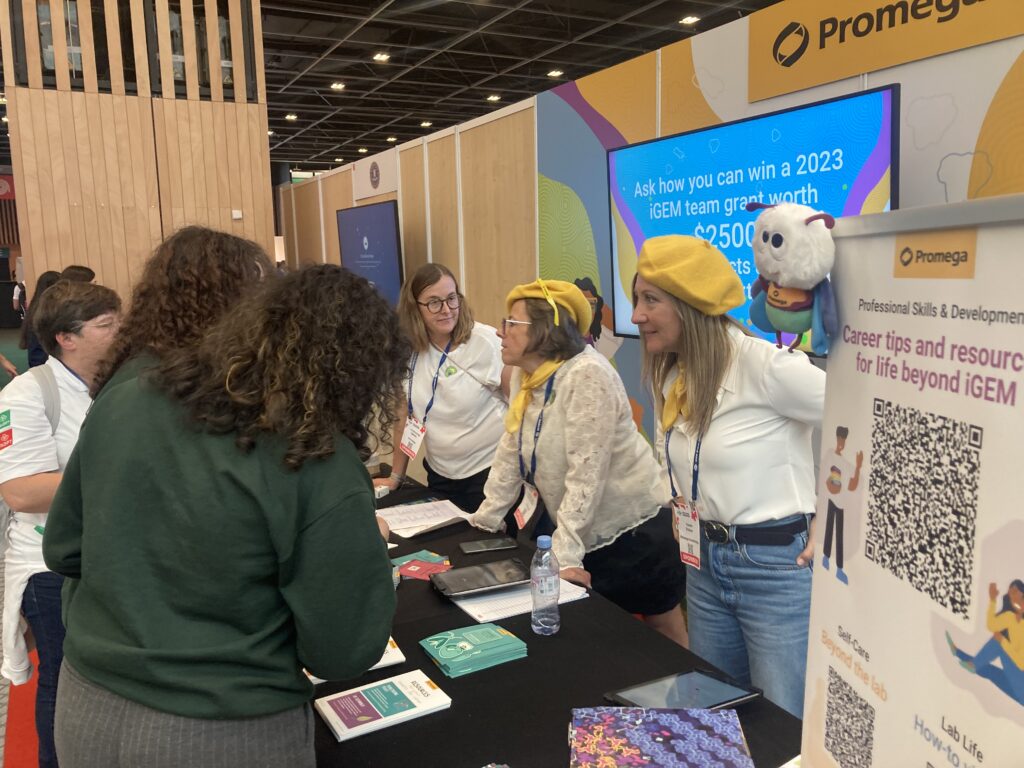
Six representatives from Promega Madison, France and Germany attended the Jamboree. We met so many incredible scientists and had countless conversations about the exciting future of synthetic biology. At the Closing Ceremonies, we were thrilled to see many of our sponsored teams take home gold medals, trophies, and even the coveted BioBrick Trophy.
Continue reading “Recapping the 2022 iGEM Grand Jamboree”